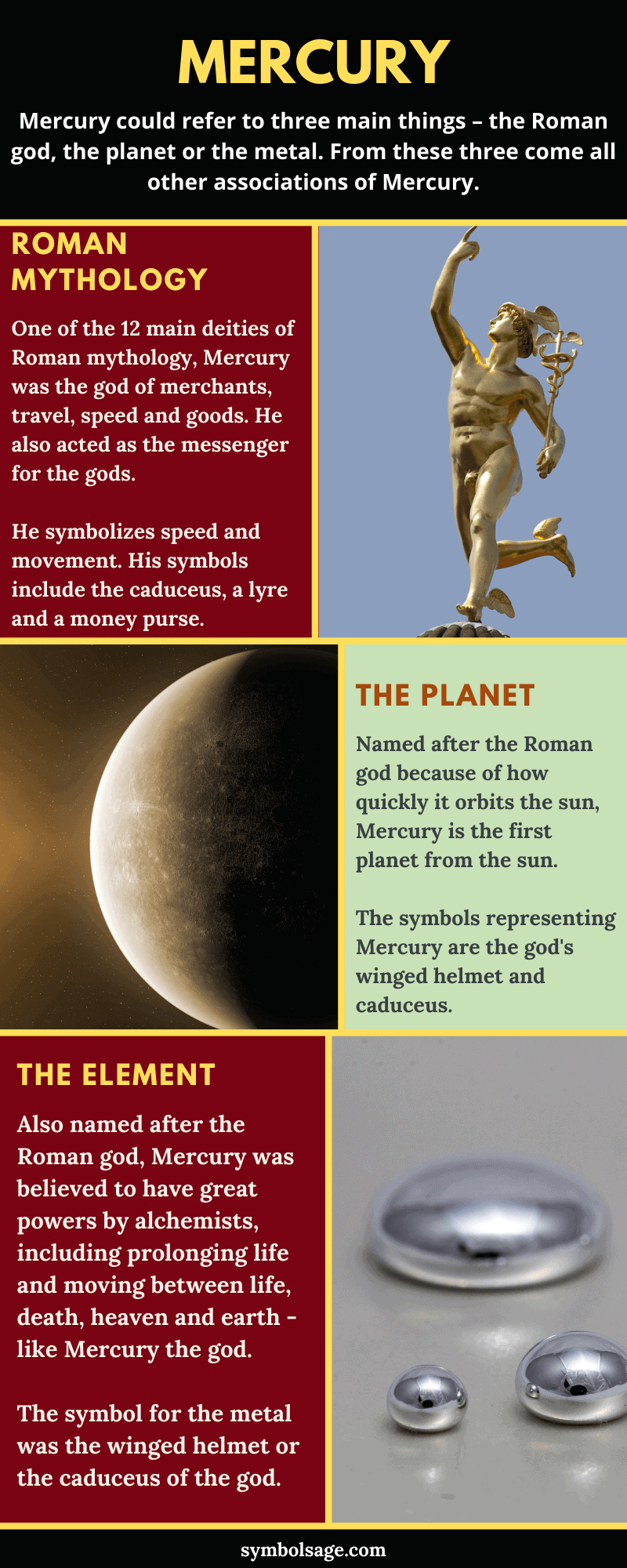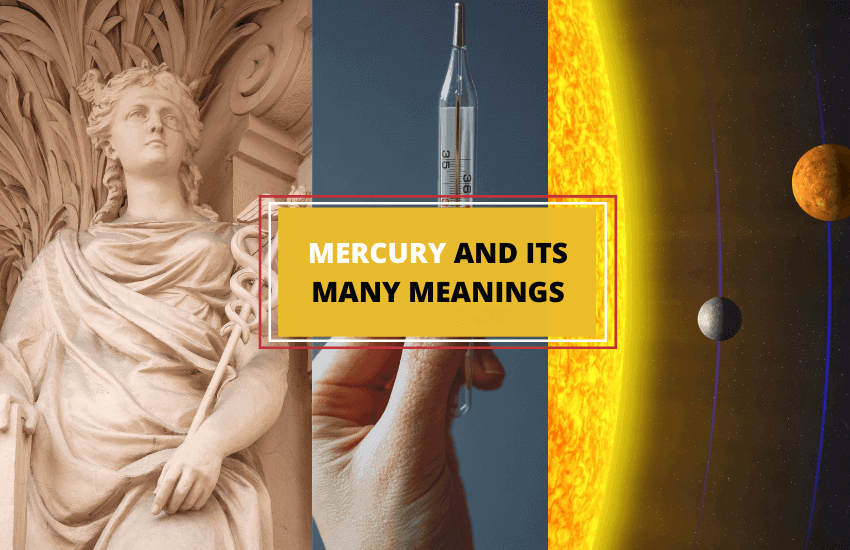
Table of Contents
Mercury has meant many different things across various histories, cultures, and academic disciplines. Today, Mercury could refer to three main things: the Roman god, the planet, or the metal. From these three come all other associations of mercury. Let’s break this down below.
1. Roman God Mercury
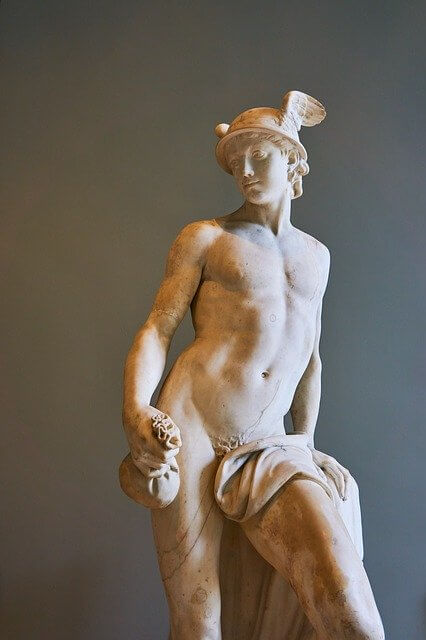
Mercury was one of the twelve major deities in Ancient Rome (Greek counterpart: Hermes) and the god of merchants, travel, goods, trickery, and speed. The name mercury is likely derived from the Latin words merx (meaning merchandise), mercari (meaning trade), and mercas (meaning wages), which is how he became the protector of merchants and trade. Merchants would pray to Mercury for the protection of their goods and for safe travel as they moved around frequently to sell their goods.
Mercury’s winged sandals gave him speed and the ability to move quickly. His winged helmet, called a petasos, emphasizes his role as a traveller. He sometimes carried a lyre, which he’s credited with inventing, and a money purse which highlights his association with merchants. But perhaps his most important symbol is the caduceus, his staff with two snakes entwined around it.
Mercury was also the only God that could easily move between the realms of the dead, the mortals, and the Gods. This is why he was revered for his role to guide spirits of the dead to the underworld.
2. Planet Mercury
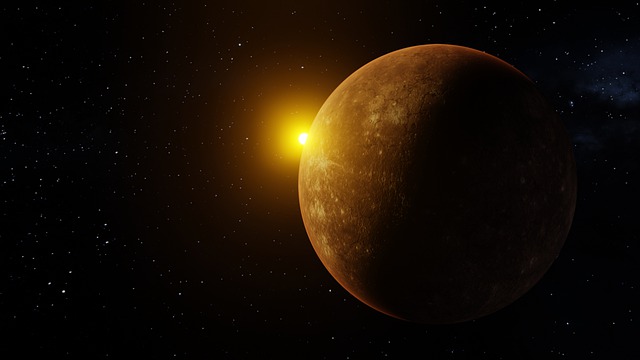
So, why do we have a planet named Mercury? Like all the other planets in our Solar System, including the dwarf planet Pluto but excluding Earth, Mercury too was named after a Roman deity.
Mercury is the first planet from the sun. It was named after the Roman god of travel and speed because of how quickly it completes its orbit. It travels through space at 29 miles per second (Earth only moves at 18 miles per second) and takes only 88 days to orbit the sun. The planet is also known as the evening star, as it is the first to appear on the horizon after sunset because of its proximity to the sun.

In astrology and astronomy, the symbol for the planet mercury is the god’s winged helmet and the caduceus. According to astrology, Gemini and Virgo signs are influenced most by the planet Mercury. They are intellectually driven and clear communicators, like the messenger god from whom the planet gets its name.
3. Element Mercury

Mercury is an extremely rare element found in the earth’s crust. Interestingly, it’s the only element to retain its common alchemic name in modern chemistry. The symbol for the element is Hg, is short for the Latin word hydrargyrum. This is derived from the Greek word hydrargyros meaning water-silver.
Mercury has always been considered a significant metal. It’s also called quicksilver because of its liquid silver state at room temperature. Mercury has been used to make many scientific instruments, such as thermometers. Gaseous mercury is used in fluorescent lamps and streetlights, among other things.
Mercury in Alchemy
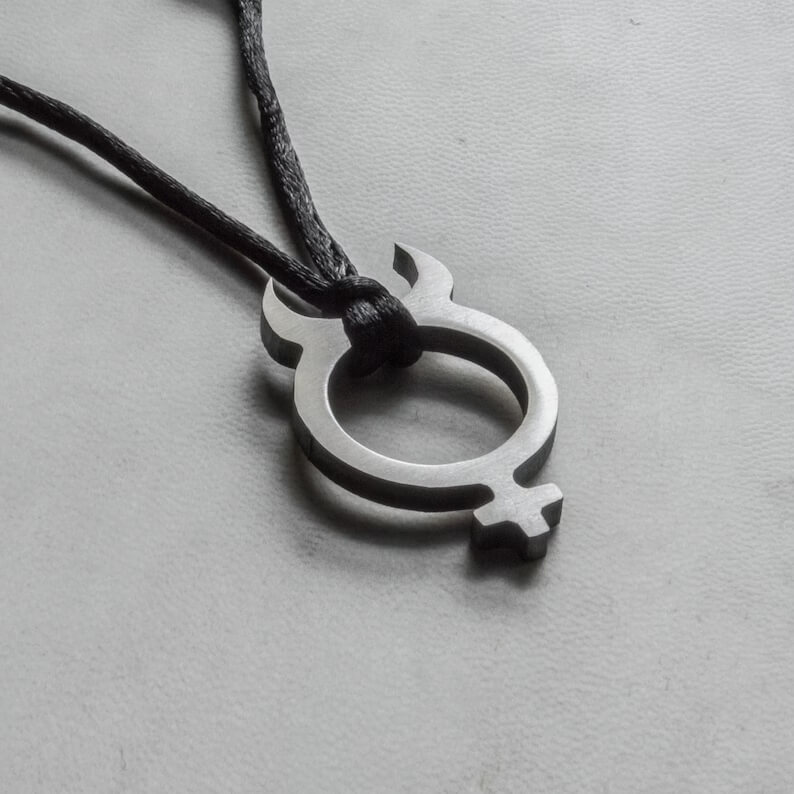
Alchemy is the medieval predecessor of modern chemistry. It was as much a philosophical practice as it was a scientific one, and often materials were ascribed with great power and meaning. Because of Mercury’s ability to change between solid and liquid states, it was also thought of as being able to transcend between life, death, heaven, and earth. It was used in applications – both medical and symbolic – to prolong life or guide spirits after death.
Alchemists believed that Mercury was the first metal that all other metals were derived from. It was often used in experiments that tried to create gold – one of the primary goals of alchemy. It was represented by a serpent or snake as influenced by the god Mercury’s caduceus. Its simplified symbol is the god’s winged helmet and caduceus.
Other Associations of Mercury
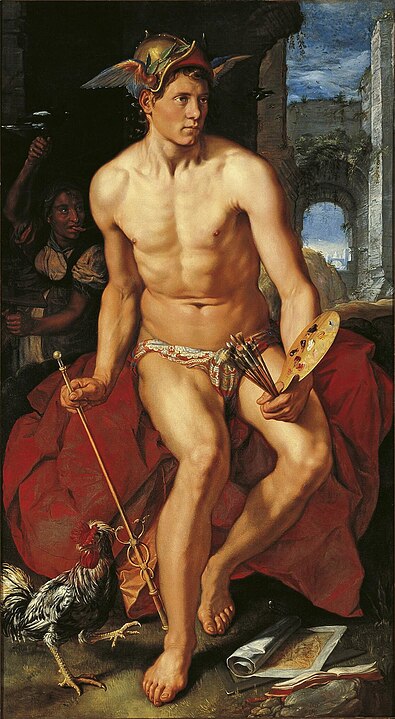
Mercury and Medicine
Mercury was used as a medical treatment in many ancient cultures, possibly because of its rarity, religious significance, and physical ability to transcend states. Unfortunately, we now know that Mercury is extremely toxic to humans, and that Mercury poisoning occurs when there’s exposure to the metal.
In ancient China, it was used to prolong life and promote good health. China’s first emperor, Qín Shǐ Huáng Dì, died from ingesting mercury given to him by alchemists that thought it would prolong his life.
Mercury was also commonly used from the 15th-20th century as an ointment designed to cure syphilis and various skin diseases in western Europe. In the early 21st century mercury’s use in medicine began to decline after several significant instances of mercury poisoning.
Mercury Poisoning

One of the most notable was mercury poisoning that occurred from ingesting fish from Minamata Bay, Japan. The fish were contaminated by mercury from the waste of a nearby plant. At least 50000 people were affected by what was eventually called Minamata Disease, which can result in brain damage, delirium, incoherence, and paralysis in severe cases.
The phrase mad as a hatter also has roots related to Mercury poisoning. In the 18th and 19th centuries, felt hats were a popular accessory. Unfortunately, the process of turning animal fur into felt hats involved using the toxic chemical mercury nitrate. Hat makers were exposed to the toxin for prolonged periods, which would eventually lead to physical and mental illnesses.
Hat-makers often developed speech issues and tremors, also called hatter’s shakes. Danbury, Connecticut was known as the Hat Capital of the World in the 1920s. Sadly, many of the workers who lived there were afflicted with the same health issues. This became known as the Danbury Shakes. Finally, in the 1940s, Mercury was banned from manufacturing in the US.
Mercury and Wednesday
Astrology also assigns a ruling planet to each day of the week. For Mercury, the corresponding day is Wednesday. This is probably why cultures with languages derived from Latin (influenced by the Romans) use words similar to mercury for the word Wednesday. Wednesday translates to Mercredi in French, Miercoles in Spanish, and Mercoledi in Italian.
In astrology, the planet Mercury is believed to impart the ability to think quickly and with clever wit. This is why according to astrology, tasks that require clear thinking, decision-making, and communication should be done on Wednesdays.
Mercury in Retrograde
In astrology, Mercury in Retrograde is an astrological phenomenon that can confuse technology, communication, and travel, all of which are believed to be under the god Mercury’s control.
The three-week period occurs every three to four months. Mercury in retrograde happens when the planet appears to be moving backwards across the sky in an east-to-west direction (retrograde) instead of the usual west-to-east direction (prograde). This phenomenon occurs because Mercury’s orbit is much faster than Earth’s.
Although both planets move in the same direction, Mercury will complete its orbit faster, so when viewed from Earth, we can sometimes see Mercury turning in its orbit, which makes it appear as though it is moving backwards.

Without modern technology, early astronomers could only observe the apparent backward motion of Mercury, and so these retrograde periods were ascribed with deep meaning. As its the planet that controls intellect and communication, its retrograde motion was thought to be responsible for any confusion experienced during that time.
People that still live by the principles of astrology believe that this period is significant and can lead to misfortune.
Mercury in Chinese Astrology
In Chinese astrology and philosophy, the planet Mercury is associated with water. Water is one of the five Wu Xing – the major elements that affect chi energy. It’s symbolic of intelligence, wisdom, and flexibility.
Water is the last of the five elements, which in order are wood, fire, earth, metal, and water. Chinese astronomers attributed these symbols to classical planets (Venus, Mars, Jupiter, and Saturn) in their order from the Earth, but because of its small size, Mercury would have appeared to be the furthest, which is why it is related to the last element.
Mercury in Hindu Astrology
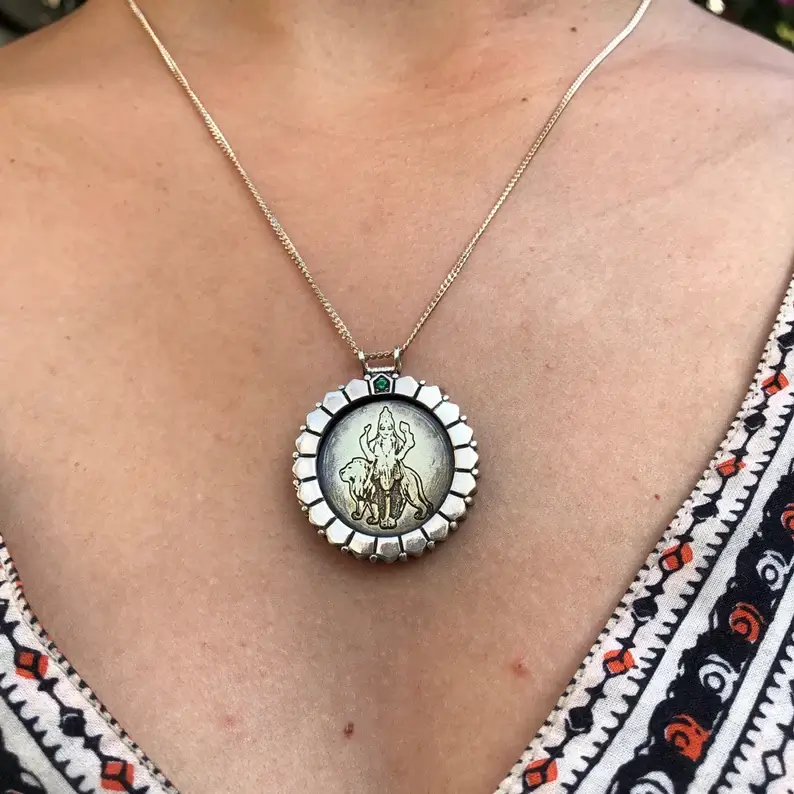
The planet Mercury also holds significance in Hindu belief systems. The Sanskrit word Budha (not to be confused with Buddha) is the word for the planet. Like Roman-influenced cultures, the word for Wednesday (Budhavara) is rooted in astrology and named after Budhain, the Hindi calendar. Mercury’s influence also focuses on intelligence, the mind, and memory.
Mercury is associated with a deity that shares the same Sanskrit name, and like the Roman god, he is considered the protector of merchants. He is depicted with light green skin color to mimic the green hue given off by the planet.
Wrapping Up
While the word Mercury is popular today, and refers to several things in our world, it all sprang from the Roman god, Mercury. The symbolism that came with Mercury then filtered through into all the other associations of the term, whether in astrology, alchemy, or astronomy. Today, we are constantly influenced by this ancient Roman deity, even though we may not know it.
Related Articles:
Abraxas: Deity, Symbol, or Magical Word?
Symbolism of the Elements: A Comprehensive Guide
Who is the Greek God Phosphorus?
The Power of Poseidon: Greek God of the Sea
Uranus: The Story of The Primordial Greek God of the Sky
Apollo: The Story of The Greek God of Music, Sun and Light
